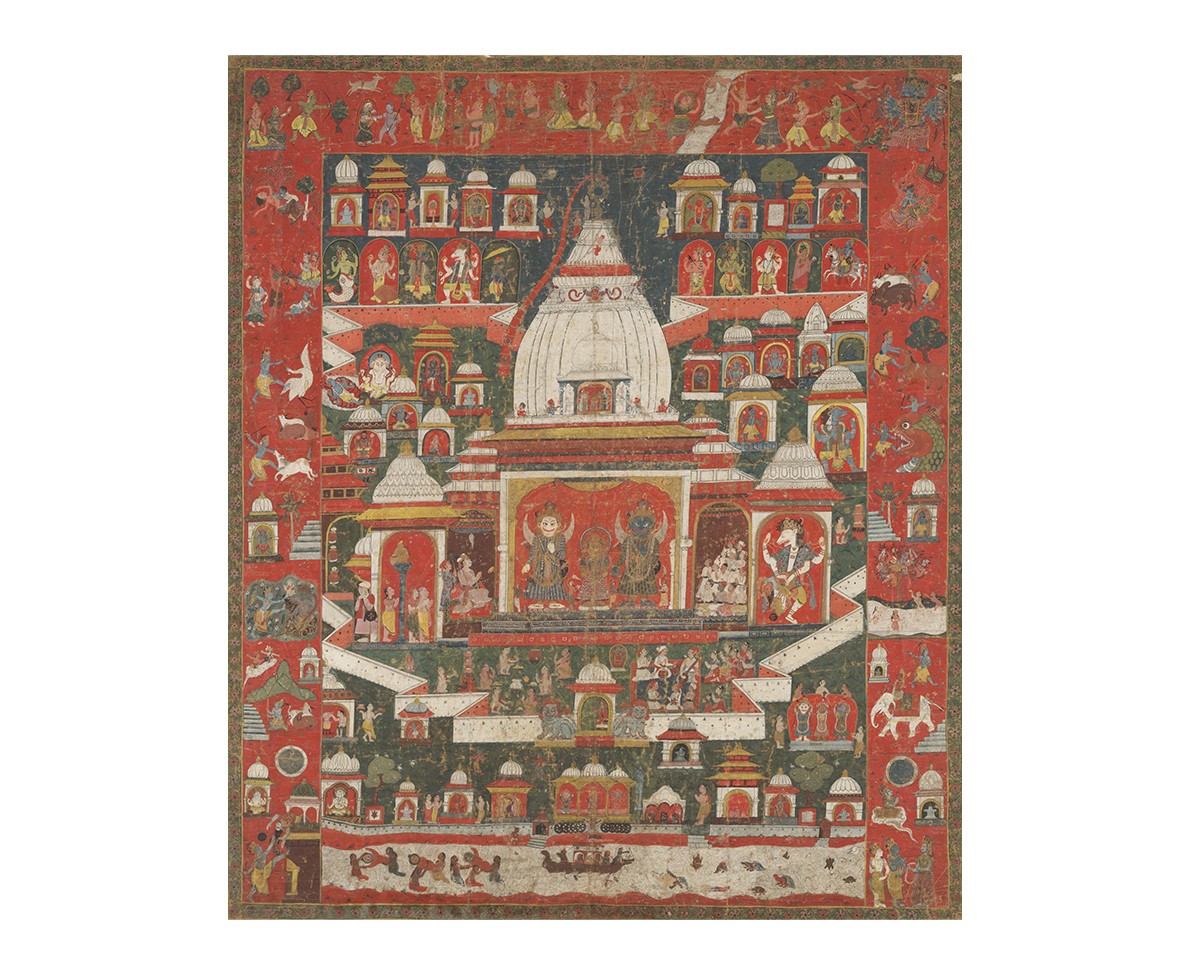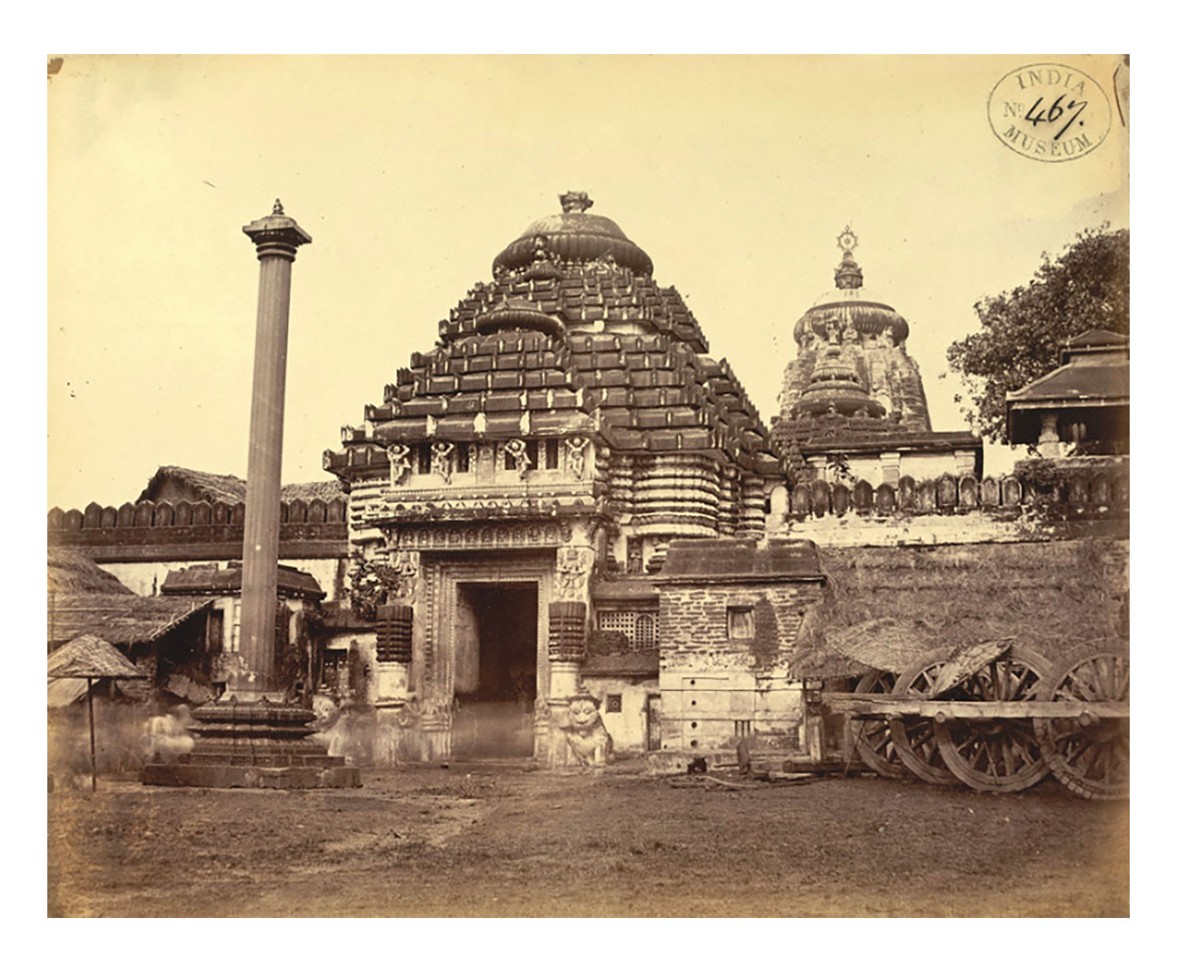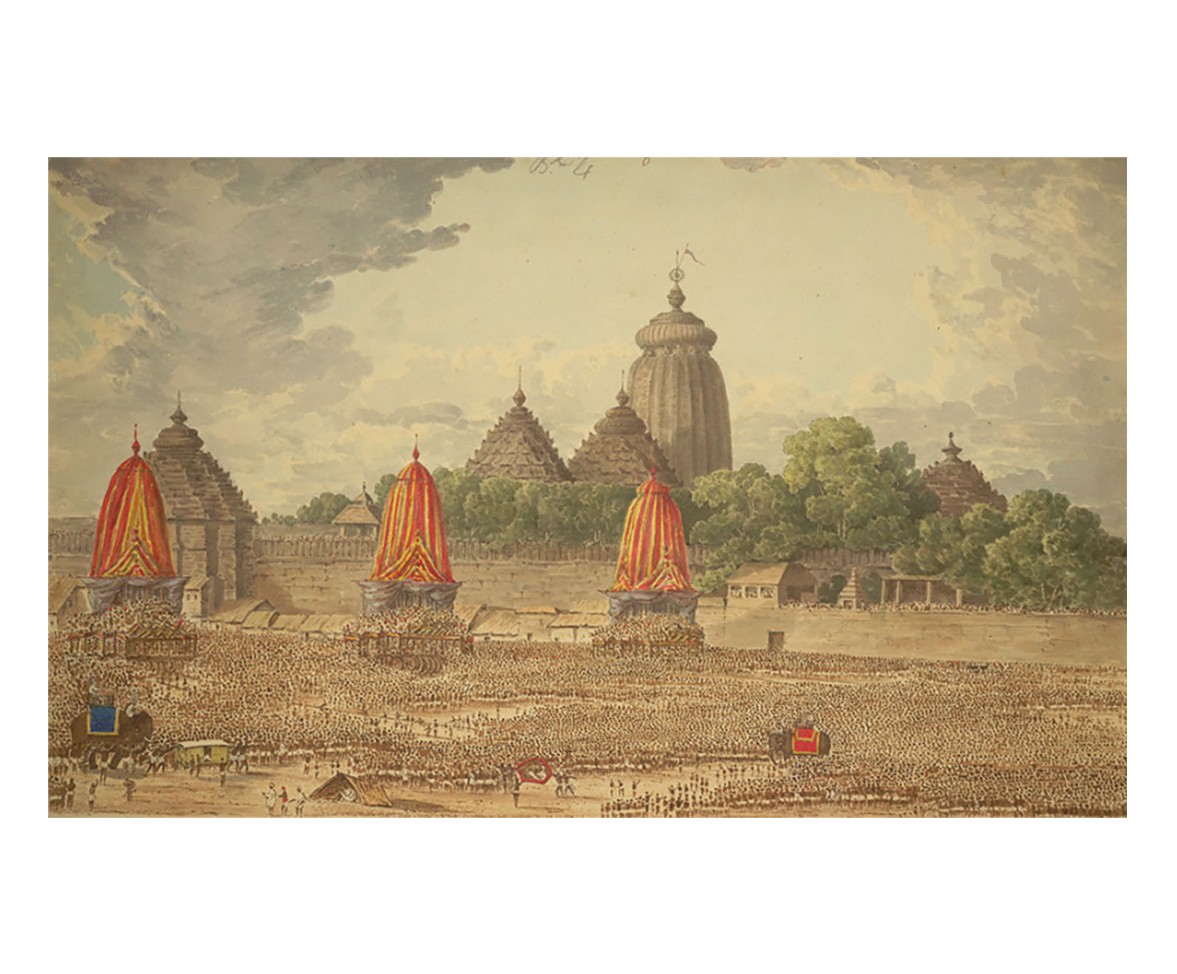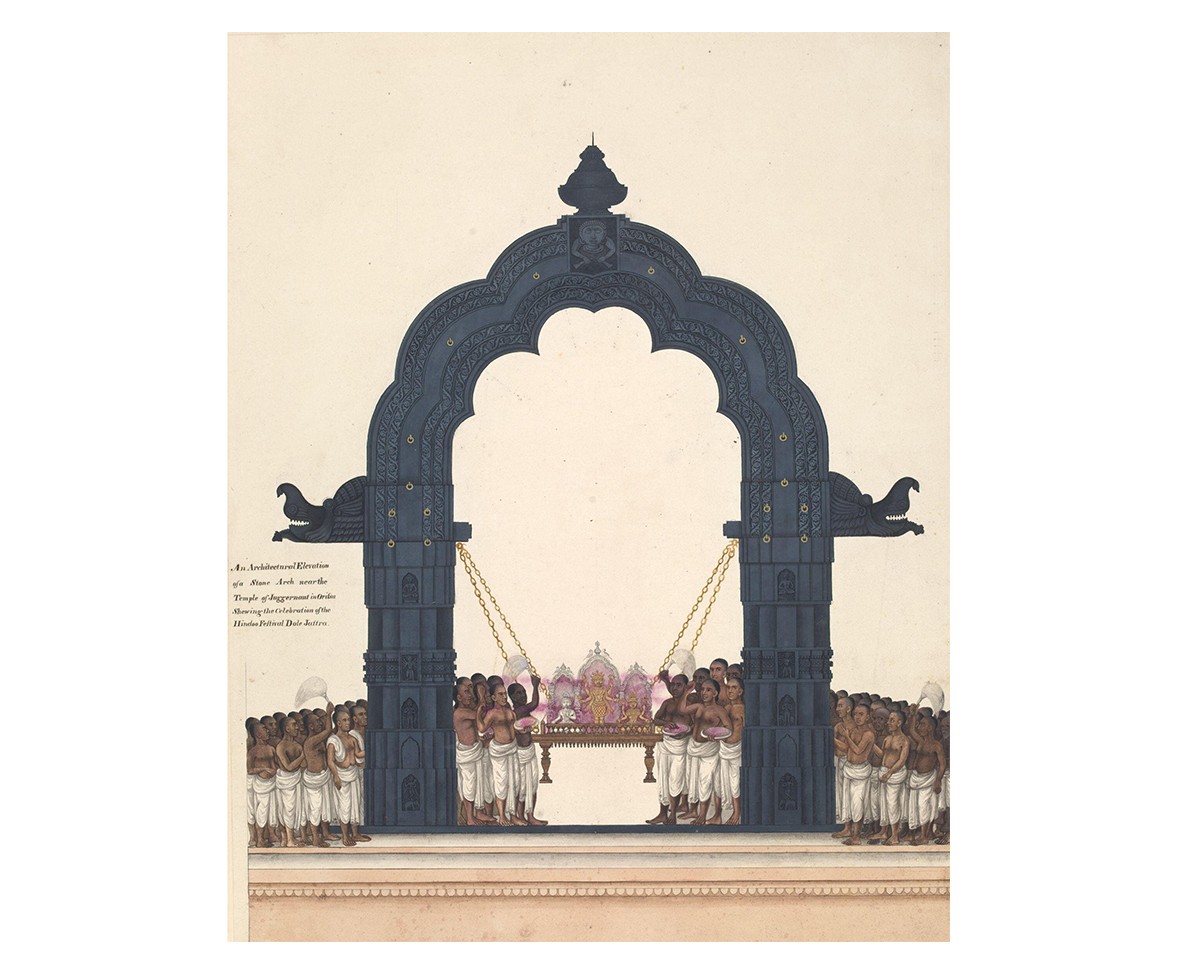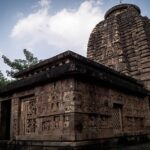The Jagannath Temple Is Consecrated
1161
The Jagannath Temple is built in Puri (in present-day Odisha) in the twelfth century by the Ganga dynasty ruler Anantavarman Chodaganga. Originally in a predominantly Shaivite region, the temple is built to consecrate and inaugurate the imperial cult of Purushottama, later known as Jagannatha. It is also intended as a sign of the Chodagangas’ successful conquest and consolidation of the region, which has been home to a large Adivasi or Indigenous population, whose religious practices and icons are believed by some scholars to have been appropriated into the cult of Jagannath.
The Jagannath temple will eventually become one of the most prominent sites of Hindu pilgrimage and the centre of the annual Jagannath Rath Yatra ceremony. Widely attended, mythologised and illustrated, the Jagannath Rath Yatra will be a major preoccupation of the colonial British administration, eliciting both wonder and aversion in the British press and accounts.
Bibliography
Behera, Karuna Sagar. Temples of Orissa. Bhubaneswar: Orissa Sahitya Akademi, 1993.
Kulke, Hermann. “Early Royal Patronage of the Jagannatha Cult.” In The Cult of Jagannatha and the Regional Tradition of Orissa, edited by Anncharlott Eschmann, Herman Kulke and Gaya Charan Tripathi, 139–56. New Delhi: Manohar Publications, 1978.
Kulke, Hermann. “’Juggernaut’ under British Supremacy and the Resurgence of the Khurda Rajas as ‘Rajas of Puri’.” In The Cult of Jagannatha and the Regional Tradition of Orissa, edited by Anncharlott Eschmann, Herman Kulke, and Gaya Charan Tripathi, 345–58. New Delhi: Manohar Publications, 1978.
Starza, O. M. The Jagannatha Temple at Puri: Its Architecture, Art, and Cult. Leiden: Brill, 1993.
Feedback 
This entry appears in
Art in South Asia
Visit Timeline
Associated Timeline Events
First Published: March 11, 2024
Last Updated: August 5, 2024



